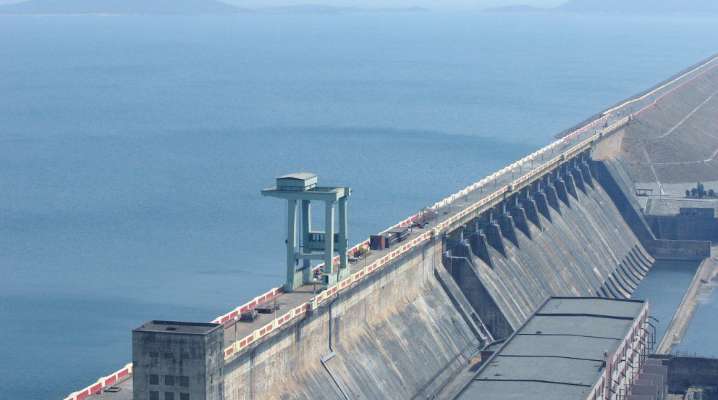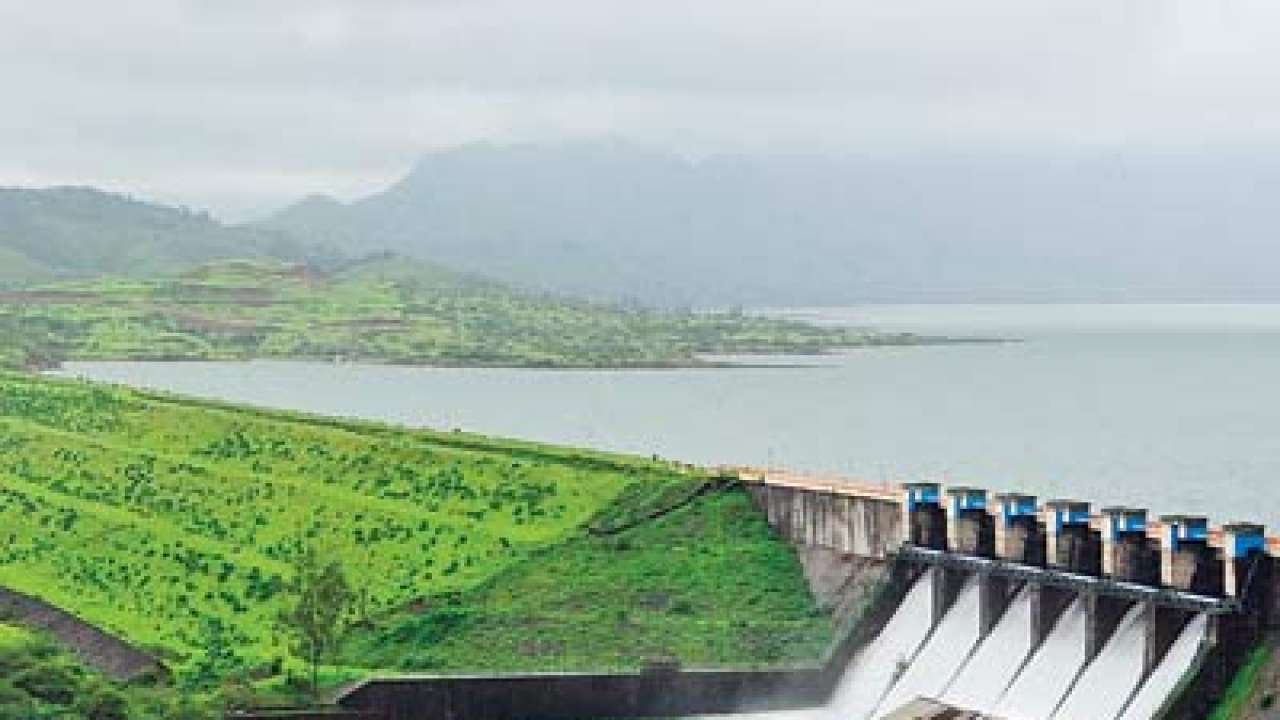Dams are the perfect examples of architectural and civil engineering marvels. Tough, strong, and extremely durable, they comprise colossal concrete walls and unpenetrable structures. Generating huge amounts of hydroelectricity, dams are inevitable for irrigation, industrial usage, and domestic purposes.
In India, there’s a huge potential for construction of massive dams, owing to the country’s abundant water resources and multiple rivers. After independence, India has constructed several dams and water reservoirs, with approximately 4300 already-constructed large dams. Moreover, there are several projects in the pipeline. They also attract many tourists throughout the year.
Satluj Jal Vidyut Nigam (SJVN), Bharat Heavy Electricals Limited (BHEL), and National Hydroelectric Power Corporation (NHPC) are the pioneering organizations who handle the dam construction business in the country. If you did not know already, Tehri Dam is the eighth highest dam in the world. Additionally, the Idukki dam is the first Indian arch dam that was built across the Periyar river in Kerala.
It is, in fact, the largest arch dam in Asia. Again, the Grand Anicut of Kallanai, which is constructed on the Cauvery River in Tamil Nadu, is the oldest dam in the world. Indira Sagar Dam is known to be the largest reservoir in India.
Table of Contents
Below, we have compiled a list of the 10 largest dams in the country.
Tehri Dam (Uttarakhand) Largest Dam In India

Image Credits- Pixabay ( Tehri Dam Largest Dam of India)
Tehri Dam, the 8th tallest dam in the world, is located on the Bhagirathi River, Uttarakhand. It is the largest dam in India, having a height of 261 meters and length of 575 meters. It is an embankment dam that is made from solid rocks and earth fills.
Its first phase was completed in 2006 and the other two phases are still in their ongoing stages. The water from its reservoir, which features a capacity of 2,00,000-acre-feet, is utilized for irrigation, municipal water supply and generating 1,000 MW of hydroelectricity.
Must Read- Top Hill Stations of India
It is 260.5 m (855 ft) high shake and embankment dam. Its length is 575 m (1,886 ft), peak width 20 m (66 ft), and base width 1,128 m (3,701 ft). The dam makes a store of 4.0 cubic kilometers (3,200,000 acre⋅ft) with a surface region of 52 km2 (20 sq mi).
The introduced hydro capacity is 1,000 MW alongside an extra 1,000 MW of siphoned stockpiling hydroelectricity. The lower repository for the siphoned stockpiling plant is made by the Koteshwar Dam downstream.
Bhakra Nangal Dam (Himachal Pradesh)

Image Credits- Pixabay ( Bhakra Nangal Dam 2nd Largest Dam of India)
A concrete gravity dam, the Bhakra Nangal Dam is located across the Sutlej river in Himachal Pradesh. It is the second-highest and the largest dam in India, featuring a height of 225 meters and length of 520 meters. It is the second largest Dam in Asia.
The Bhakra Nangal multipurpose dams are first among the waterway valley advancement plans taken by the government after independence. The dam has the highest gravity on the earth. The Gobindsagar store gravity on made by the dam is the third biggest supply in India.
It holds water in the right ways and keeps the fields from being harmed during a rainstorm. It has ten power generators on both of its sides. Additionally, it is the fourth biggest dam after the Tehri dam. For security reasons, the visitors to Bhakra Nangal were restricted in 2009.
Its reservoir called the Gobind Sagar Lake has a capacity of 7,501,775 acre·ft. It is the second largest reservoir in India, the first place being occupied by Indira Sagar dam.
Sardar Sarovar Dam (Gujarat)

Image Credits- Pixabay (Sardar Sarovar Dam Gujarat)
Sardar Sarovar Dam aka Narmada Dam is the most massive project that has been built or will be constructed on the Narmada river. With a height of 163 meters and length of 1210 meters, it is located in Gujarat. It plays a vital role in providing water to the arid regions of Kutch and Saurashtra, which are often prone to severe and frequent droughts.
This dam is considered to be vision of India’s first deputy prime minister Sardar Vallabhbhai Patel. The dam’s foundation was first laid out by India’s first Prime Minister Pandit Jawaharlal Nehru on 5th April, 1961.
Sardar Sarovar Dam has the capacity to generate up to 200 MW of power and offers its benefits to the states of Gujarat, Madhya Pradesh, Maharashtra, and Rajasthan. It features a reservoir capacity of 7,701,775 acre·ft.
“Four crore Gujaratis will get drinking water and 22,000 hectares of land will be irrigated,” claimed union minister Nitin Gadkari on the benefits of the project.
Hirakud Dam (Odisha) Hirakud-Dam

Image Credits- Pixabay (Hirakud Dam One of the longest dams in World)
The next entry on our list is the Hirakud dam, which is built across the Mahanadi River in Odisha. It is one of the longest dams in the world with a length of 26 km and a height of 61 meters. The dam also has two observation towers, namely “Gandhi Minar” and “Nehru Minar”.
Cattle Island, Vimleshwar Temple, Huma Temple, and Ushakothi Wildlife Sanctuary are some of the nearby tourist attractions from the dam where you won’t mind to extend your Hirakud Dam trip.
It does not have any place or facility for accommodation, so if you are planning to visit Dam it is advisable to leave the place by afternoon or plan your outing accordingly. The nearest place to stay is 21km far from here that is Sambalpur.
Its 55 km long reservoir is used for multiple purposes, including flood control, irrigation and power generation.
Nagarjuna Sagar Dam (Telangana)

Image Credits- Pixabay (Nagarjuna Sagar Dam One of the world’s largest and tallest dams Masonry dams)
The last entry on our list is the Nagarjuna Sagar Dam, which is also the world’s largest masonry dam. It features a height of 124 meters and has been constructed on the Krishna River in Telangana.
Branded as the largest man-made lake in the world, it is 1.6 km long and comprises 26 gates. A spectacular example of India’s architectural and technological know-how, it also serves as an attractive tourist spot.
Koyna Dam (Maharashtra)

Image Credits- Pixabay (Koyna Dam)
Maharashtra is known for housing some of the biggest dams in India. And Koyna Dam is one of the large-scale projects in the state, with a height of 103 meters.
This rubber concrete dam is constructed across the Koyna river and is used for generating hydroelectricity and serving the irrigation needs of neighbouring states. Koyna Dam has a production capacity of 1920 MW.
Indira Sagar Dam (Madhya Pradesh)

Image Credits- Pixabay (Indira Sagar Dam)
Located in Madhya Pradesh and built on the Narmada River, Indira Sagar Dam stands at a height of 92 meters. A concrete gravity dam, it plays a primary role in handling the water crisis issue in the area.
It has one of the largest water reservoirs in the country with a capacity of 7,904, 454 acre-feet. Its installed capacity is 1000 MW.
Must Read- Top 10 beaches in Goa
Rihand Dam (Uttar Pradesh)
 Image Credits -Pixabay (Rihand Dam)
Image Credits -Pixabay (Rihand Dam)
The Rihand Dam is the biggest dam, in terms of volume in India. It is also known as the Gobind Ballabh Pant Sagar Dam and was built long back from 1954 to 1962.
Located on the border of Madhya Pradesh and Uttar Pradesh, it is a concrete gravity structure and has a height of 91.44 meters. It has a total capacity of 300 MW
Mettur Dam (Tamil Nadu)

Image Courtesy- Pixabay (Mettur Dam)
Mettur Dam is built on the Cauvery river and it is situated in Salem district, Tamil Nadu. Standing at a height of 120 feet, it was constructed in 1934, making it one of the oldest dams in India.
It has one of the most powerful power generating capacities in the state and plays a huge role in supplying the region with hydroelectricity and irrigation. Additionally, it also serves as a famous tourist spot. Its installed power capacity is 200 MW.
Krishna Sagar Dam

Image Courtesy- Pixabay (Krishna Sagar Dam)
Also built on the Cauvery river, the Krishna Sagar Dam is located in Karnataka, near Mysore. The structure is not only known for its capacity to generate massive amounts of hydroelectricity and irrigation water but is also famed for housing the Brindavan Gardens — one of the most frequented tourist spots in India.
Well, this ends our list. We can add several other names to this catalogue. But here, we have tried to cover only the 5 biggest dams in India. Hope it helps!


